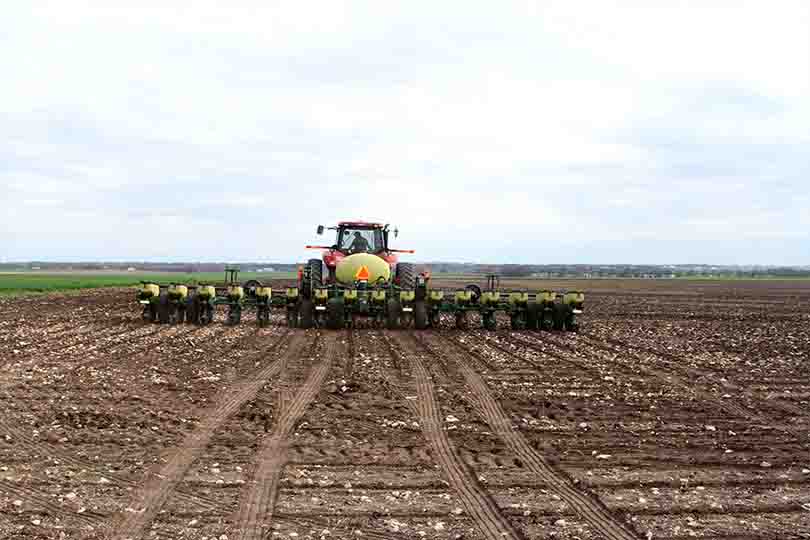By Julie Tomascik
Associate Editor
Record high prices have come and gone, leaving management decisions to maximize profitability for Texas farmers and ranchers in 2016.
But it’s tough to get excited about this year’s grain prospects after three years of good worldwide production, said Dr. Mark Welch, associate professor and Texas A&M AgriLife Extension economist.
That amount of production has created an oversupply situation.
“It looks like another year of prices going sideways at this point,” Welch said.
But he’s optimistic, hoping farmers can cut input costs to boost their profitability. Although wheat farmers may not see much of that this year.
“The world supply, relatively speaking, is larger for wheat than corn or the other major crops,” he said.
It would take a significant disruption of production to increase wheat prices.
The stronger U.S. dollar also is a downside for exports.
“Wheat is probably the toughest crop to look at because of the large global stocks and the struggles we face in the export market due to the value of the dollar,” Welch said.
But grain sorghum is still an option for farmers in the Lone Star State, although the attractiveness has diminished some due to fewer Chinese imports and record high yields last year.
“We’re back to the normal price relationship for corn and sorghum, which perhaps takes away some of the incentive to choose sorghum,” Welch said.
And the devastating sugarcane aphid raises additional concerns.
“The production issues of managing that pest are so serious,” he said. “In some areas, it might be a deciding factor—the difficulty in managing that pest—between planting sorghum or corn.”
For corn, the real question is in the acres, according to Welch.
He doesn’t forecast a significant increase in corn acres, but this spring’s weather pattern could create windows of opportunity. Or despair.
“My price predictions for wheat, corn and grain sorghum are for prices marginally higher than 2015,” Welch said. “If farmers can get production up and costs down, I think that will shape 2016 to be a little better and maybe we can work our way out of this.”
The cheaper grain, although tough for farmers, should continue to help Texas livestock producers this year.
But the short-term cattle market is a little bleak.
“We’ve had a host of issues at the end of 2015 that forced prices lower,” said Dr. David Anderson, professor and Extension livestock economist. “Although we still had fewer fed cattle, they were heavier.”
More beef produced, combined with decreased imports, meant a slight drop in prices.
Anderson believes the market is beginning to straighten itself out, and producers can expect to see profitable prices, but no record highs.
Those prices, are driven in large part by lower input costs—less expensive feed and cheaper fuel—and historically tight supplies of cattle and calves.
Dairy farmers have struggled and will continue to do so, Anderson said. The issue is export driven.
“We export a lot of milk products, in fact to the tune of some 15 percent or so of milk equivalent,” Anderson said.
Products like milk powder, butter and cheese are in demand in a growing world economy. But a glut of milk on the world market is affecting U.S. prices.
“I tend to think it’s going to work itself out, but it likely won’t happen until late 2016,” he said.
One area that has rebounded is pork production. After suffering from porcine epidemic diarrhea virus (PEDv) for a few years, the industry is now better at managing the disease.
And the lowest feed costs in nearly a decade have expanded production.
Anderson warns that significantly increased production could result in hog farmers seeing fewer returns, but it will likely take some time for that to happen.
Those lower feed costs have also helped poultry farmers, fueling expansion and growth in production.
Avian influenza did have a major effect on production in the Midwest, but Texas farmers have remained free of the disease.
But one bright spot on the horizon for both farmers and ranchers is moisture.
This winter’s El Niño event has farmers and ranchers seeing full soil profiles. For some, it’s the first time in years.
“The amount of moisture we’ll be working with this spring is a bonus,” Welch said. “Wet conditions are b

